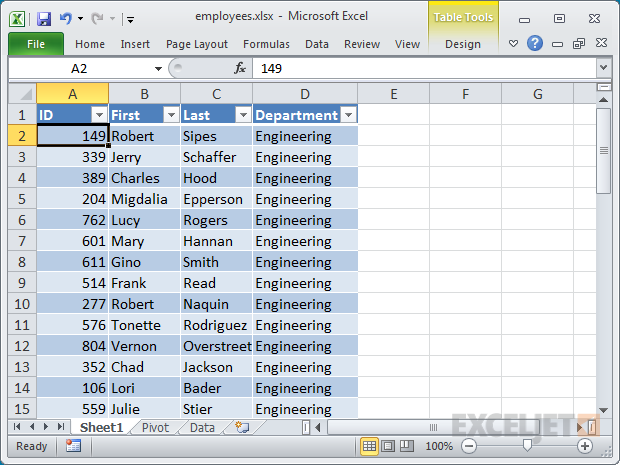

Since then, most of the other contenders have fallen by the wayside and although LibreOffice and Google Sheets support Pivot Tables, the undisputed King of Pivot Tables is Excel. Microsoft joined the party in 1994, when Excel 5 included Pivot Table functionality for the first time. Lotus was first to the market with a Pivot Table enabled spreadsheet, Improv, in 1991. Pivot Tables have been around for a long time (well in Personal Computer years anyway). I prefer to think of a Pivot Table as: A really cool way to get to the stuff that's actually important to you.Ī bit of History. Or, as Microsoft say in their own words: "A PivotTable is a powerful tool to calculate, summarize, and analyze data that lets you see comparisons, patterns, and trends in your data." A Pivot Table is a statistical tool to extract and summarise data from large data sets. You can also import or export pivot tables to and from Excel.OK, let's get the boring bit out of the way first. To copy a pivot table to other apps, such as Pages or Notes, create a snapshot. You can use Quick Filters to include only specific source data in the pivot table or create a pivot chart of different data (such as totals or grand totals) to help you visualise trends.
#Pivot table tool how to#
You can change which function is used, how to display the results in the pivot table and whether you want to see Totals and Grand Totals. Value fields use functions, such as sum or average, to summarise data.
#Pivot table tool manual#
If you add another field, such as Product, to the Rows section, you create a hierarchy of rows and groupings - in this case, electric and manual bicycles, scooters and skateboards. The sections where you place the fields and how you order them determine how the pivot table displays data.įor example, if you place the Power field in the Rows section, a row is added to the pivot table for each unique value in the Power column source data - in this case, Electric or Manual. Based on the type of data they contain, the selected fields are automatically placed in one of three sections - Columns, Rows and Values - but you can rearrange them however you like. The columns in your source data table are listed as fields. You choose what data to use in your pivot table and how to organise it in the Pivot Options tab of the Organise sidebar, shown below. You can create pivot tables to analyse data, quickly group and calculate values, and identify interesting patterns and trends.Īlmost any other table in your spreadsheet can provide the source data.

See the latest activity in a shared spreadsheet.Place objects inside a text box or shape.Format Chinese, Japanese or Korean text.Use a keyboard shortcut to apply a style.Create, rename or delete paragraph styles.Bold, italic, underline and strikethrough.Format a spreadsheet for another language.



 0 kommentar(er)
0 kommentar(er)
